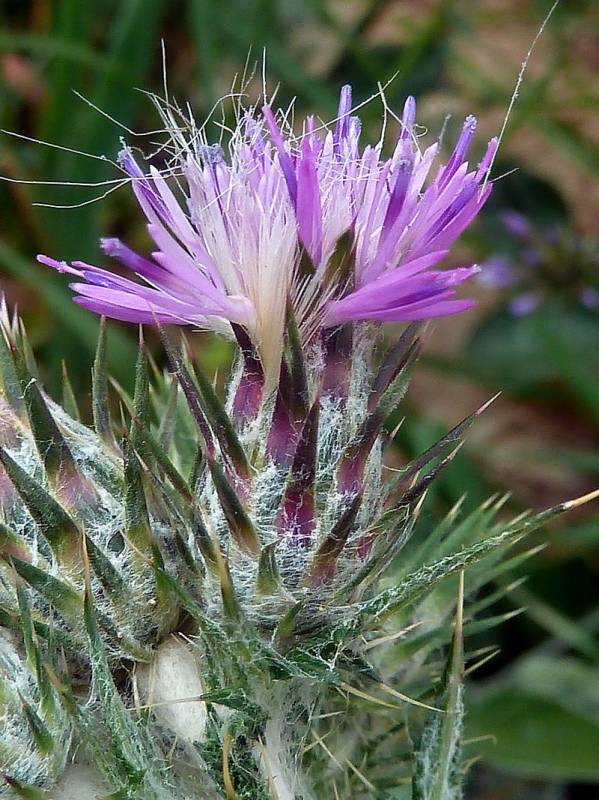Carduus nutans
Carduus pycnocephalus
musk thistle, nodding thistle
Italian plumeless thistle
Leaves deeply lobed, up to 40 cm. long and 15 cm. wide, mostly glabrous.
Basal leaves tapering to winged petioles, blades 10–25 cm, margins pinnately 2 to 5 lobed, abaxial faces ± tomentose, adaxial faces tomentose and pilose, often glabrate;
cauline leaves sessile, shorter, margins less divided than basal, distally reduced to bracts.
Heads mostly solitary and nodding at the ends of the branches, the disk usually 4-8 cm. wide; middle and outer involucre bracts broad, 2-8 mm. wide, with long, flat, spiny tip, the mid-rib very prominent; inner bracts narrower and softer, often purplish;
flowers purple;
pappus capillary, not plumose.
Heads borne singly or clustered in tight groups of 2-5, heads at ends of branches and sometimes in upper axils, sessile or short-pedunculate, 20–25 mm;
peduncles winged throughout or unwinged, 0–2 cm long, tomentose;
involucres cylindric to ellipsoid, 17–22 mm diameter;
phyllaries linear to lanceolate, with appressed loosely tomentose bases, 2–3 mm wide and ascending, linear appendages 0.5–1.5 mm wide, not scarious, distally scabrous on midribs and margins, spine tips 1–3 mm, inner straight and erect, with unarmed or minutely armed tips;
Corollas purple, dark purple, or pink, 14–16 mm long tube;
lobes 3 times longer than throat.
Achenes glabrous.
Cypselae ellipsoid, golden to brown, 4–6 mm, finely 20-nerved;
pappus bristles 15–20 mm.
Carduus nutans
Carduus pycnocephalus
- Local floras:
BC,
CA,
OR,
WA
- Local Web sites:
CalFlora,
CalPhotos,
Flora NW,
PNW Herbaria
WildflowerSearch
iNaturalist (observations)
USDA Plants Database
- LBJ Wildflower Center
- SEINet
- Plants of the World Online
- Encyclopedia of Life
- Wikipedia
- Google Image Search



